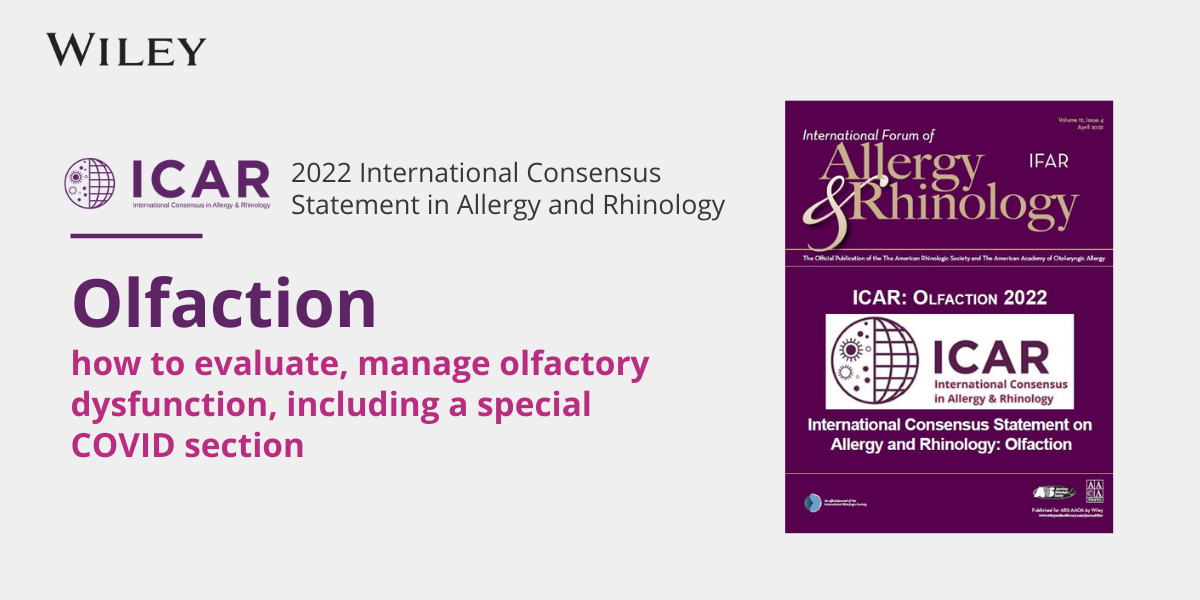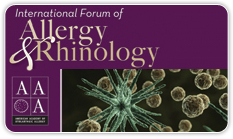Still deciding whether to register for the upcoming Explorers Course 2026?Take a moment to watch these highlights shared by attendees from the previous course.Their firsthand experiences offer valuable insight — and demonstrate why the Explorers Course 2026 is one you…
Starting an Allergy Practice
The essential tools and pearls for a successful allergy practice by those who have done it!
Adding allergy as an ancillary service can be a very rewarding addition to your practice as an otolaryngologist. This is a small guide to serve as a check list to help guide you with all the necessary components you need to be able to successfully and safely practice allergy.
Deciding Scope of Practice
- The physician should decide what allergy testing, treatment they are going to offer.
- For testing
- Prick testing, Intradermal Testing, Modified Quantitative Testing, RAST testing
- Inhalant allergens, Food Allergens, Venom
- Spirometry and Asthma management
- Patch testing, skin disorders
- Treatments
- SCIT, SLIT, Tablet treatment
- Nebulizer treatments
- Biologic treatment
Space Considerations
- Separate Allergy Spaces are necessary for the appropriate testing and treatment of patients.
- In general the clinic will need the following:
- Refrigeration of allergens
- A refrigerator must have space for stock allergens, testing and treatment boards, and all patient vials. The refrigerator can store other medications but not house food or other specimens.
- Allergens should be stored at 4 degrees Celsius in a range of 2-8 degrees Celsius. Temperature alarms and daily temperature logs can unsure potency and sterility of the contents.
- Can be kept anywhere in the clinic but wise to keep near the allergy compounding room.
- Allergy testing room
- Large enough to fit allergy testing staff, patient, and family.
- Ideally the patient chair should recline in case of an adverse advent and access to the back for skin testing.
- Room should have access to equipment for vital assessment and the code cart in case of emergency.
- A timer can alert staff that a test is ready to be read.
- Educational material or reading material can help keep patient occupied.
- An allergen compounding area
- USPs sterile compounding committee added the subsection “Allergenic Extracts as (Compounded Sterile Preparations) and sought to define the minimum standards for which allergens should be compounded.
- USP 797 has specified the minimum requirement that a space meet for immunotherapy mixing to be deemed safe.
- Should be closed off from the remainder of the clinic free of distractions
- Be done in 1 of 2 settings
- ISO Class 5 Primary Engineering Control (PEC). ISO Class 5 PEC’s are strictly defined and must be certified every 6 months.
- Dedicated Allergy Extract Compounding Area (AECA). AECA are more commonly used and must meet the following criteria: 1 meter from a sink away from unsealed windows, doors to the outside, kitchen or bathroom, a low traffic area, restricted to authorizied personnel, surfaces cleaned and soft with no crack or crevice, no carpet, no overhangs, well light room, temperature/humidity control, surface cleaned and disinfected after each session, walls and doors disinfected monthly, ceiling cleaned.
- If the above criteria are met, allergy CSPs are not subject to environmental and beyond-use-data storage requirements.
- Waiting area
- After receiving shot, or new vial drop we recommend patients wait in the office for 30 minutes to monitor any adverse events. Your waiting room should accommodate these patients and specify chairs for the allergy patients so they can be easily seen by the front desk staff.
- Refrigeration of allergens
Equipment and Supplies
- Allergen Supplier
There are several Allergen suppliers that can usually set one up with all the initial allergy equipment to get started. They also have resources for training and organizing your practice.
- Allergy Equipment needed:
- Allergens in the region of your practice (inhalant, food, venom)
- Medication allergens for Penicillin testing
- Syringes for mixing and injection
- Prick testing applicators
- Vials
- Testing Wells for prick testing
- Racks for vials and storage
- Dilutant material, PNS, Glycerin
- Labels for mixing and shot preparation
- Emergency Medications and Equipment.
It is essential to have an emergency tackle box (containing the essential meds, oxygenation equipment, IV equipment) in the event of an anaphylactic reaction. This could also be a more advanced crash cart with everything for a full code if access to paramedics and subsequent hospitals are a further distance. The meds and emergency equipment can be purchased by most medical suppliers.
- Airway and Oxygen
- AED device
- Facemask
- Nasal Cannula
- Oral Endotracheal tubes
- Intubation Laryngoscope
- Tracheostomy Set
- Oxygen Tank
- Ambubag
- IV supplies
- IV fluids
- IV catheters and connection tubing
- Syringes with needles
- Tourniquet
- 1 “ tape
- Latex fee gloves
- Alcohol swabs
- Epinephrine 1:1000
- Diphenhydramine 25-50 mg/ml
- Ranitidine 25-50 mg/ml
- Methylprednisolone 125 mg vial
- Albuterol MDI/nebulizer
- Ipratropium MDI/neg
- Atropine 0.5 mg /ml IV
- Glucagon 1 mg/ml
- Heparin 10000 units/ml
Personnel
Who will perform testing and treatment?
- Check state regulatory laws and regarding scope of practice to physician assistants, nurse practioners, nurses, nurses, medical assistants to determine who can perform testing and administer treatment and in what capacity they need supervision.
- States will have varying requirements on:
- Level of training of provider
- Dispensing laws for immunotherapy
- Need for basic and advanced life support training
Training and Certifications
- Ancillary Staff
- Staff will perform both administrative and clinical task related to running an allergy practice. There is no formal certification required to be an allergy technician. Allergy technicians are simply medical assistants who acquire specialized knowledge in the allergy field by working and training in an allergy focused medical practice.
- LPN, RN can provide excellent patient education and strong support to an outpatient allergy practice.
- States have different parameters for what medical assistants and LPNs can perform in terms of testing and injections.
- All staff including administrative assistants should be thoroughly trained in BLS and the recognition and response to anaphylaxis. All staff should be participants in the observation process.
- The AAOA Basic Course is structured for otolaryngologists integrating more allergy assessment and management into their practice, AAOA members providing specialized allergy care who need to remain current with literature-based evidence and practice trends, residents, PA/NPs who work in otolaryngology, and allied health staff who support their physicians in the management of allergic patients. The Basic Course offers unique opportunities to interact with the faculty to discuss nuances and answer questions, as well as hands-on practica to demonstrate technique.
- Upon completion of the course, participants should demonstrate competence in the evaluation and management of the allergic patient, including utilization of appropriate testing techniques, implementation of environmental control, delivery of allergy pharmacotherapy, and delivery of safe immunotherapy.
- The AAOA Advanced Course is intended to advance physician competence and performance and is intended to result in improved patient care outcomes. It is the second prerequisite for AAOA fellowship eligibility.
- A fellowship designation is available for physicians meeting requirements set by the AAOA.
Making Yourself Known
- Set up a mailing to local doctors in primary care from the local medical association, local hospital privilege list. You may want to set a 20 mile parameter in a dense area.
- Offer an Open house and send out fliers to the same group inviting them to your finished office. Plan for drinks and refreshments and a sign-up sheet to see who came. Send a thank you note and add information to your contacts.
- Make a visit to the closest geographical physicians and give them your cards. Make a handout of what you do in your practice. If just starting out emphasize your availability and option to get patients in the same day.
- Partner with an allergy rep and host evening meeting with dinner to talk up what you offer. Make sure to talk short and to focused small groups. Let the referring doctors talk more than you and re enforce sublingual. Establish referring relationships.
- Partner with a biologic rep and have an evening of questions and answers,
- Advertise in a local newspaper and weekly newsletter. Try to advertise in local religious group bulletins and advertising.
- Go to all hospital functions and meet referring doctors in person.
- Get to know the allergists and partner with them to take care of sinus disease that needs surgery. Explain to them you are interested in more simple allergic care and will be referring more complex patients in their way.
- Always send a referring doctor your clinical summary.
- Go to the local school and parent night with ENT questions. Try to make a presence on the community board and school board meetings.
- Sign up for a meeting at the local medical association annual meeting. Get on an allergy panel or moderate your own panel and have local allergists talk at the state society meeting.
- Get involved with your local ENT state society and volunteer to do projects and be helpful. Attend all the meetings and get to know all the ENT colleagues. Try to get involved with leadership.
- Get excited to work in the best field of medicine there is!
Download the Starting an Allergy Practice document here.
Jodi Zuckerman MD, FAAOA, Anna Butrymowicz MD, FAAOA, Robert Stachler MD, FAAOA, Michelle Liu MD, FAAOA




